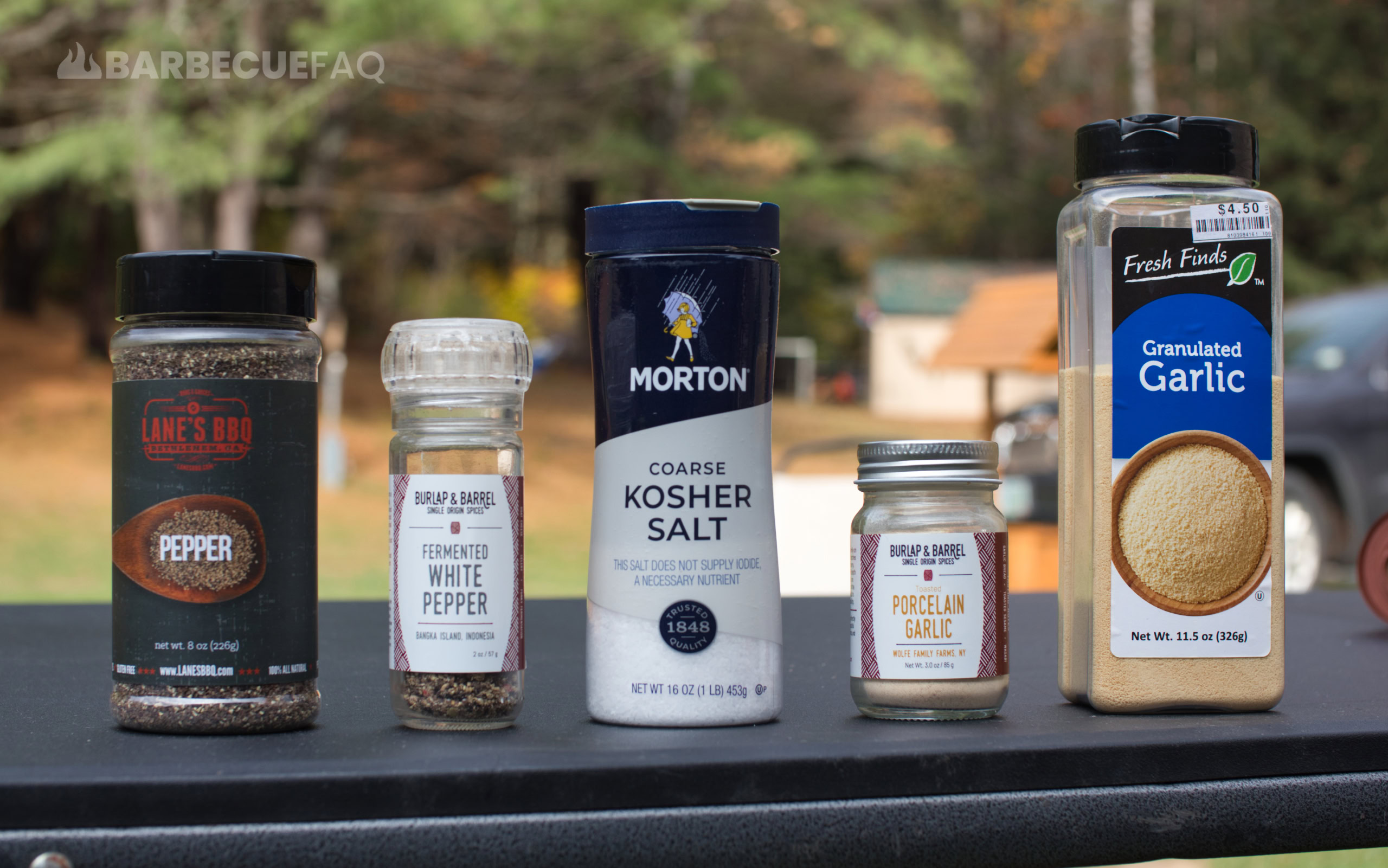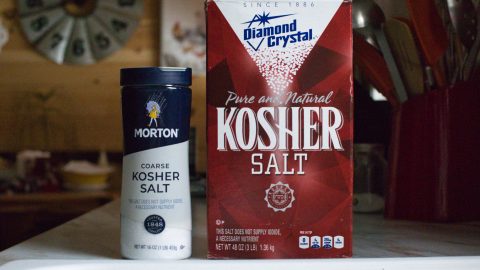Ingredient Explanations, Substitutes, and Omissions
Note: There are certain ingredients I’ll just never have on hand – meaning, some I’ll be omitting (explained below).
This is also why Steve says it’s cheaper to buy the rub vs buying each ingredient.

Most people don’t have:
- “Grilled meat flavor”
- i+g (disodium inosinate and guanylate)
- Soybean oil
- Powdered/Flour salt
- Beef Base Powder
- Certain mesh sizes of pepper
With that said, there are certain ones that this recipe requires and others you may or may not miss.
Any and all ingredients I remove are simply added to the Pepper volume (roughly ~5% of the overall rub volume).
The Pepper
If all you have is 16 mesh black pepper, use 1/2 cup and 2 tablespoons.
Steve’s rub uses two different types of “mesh” size for pepper – those being 20 and 34 mesh.
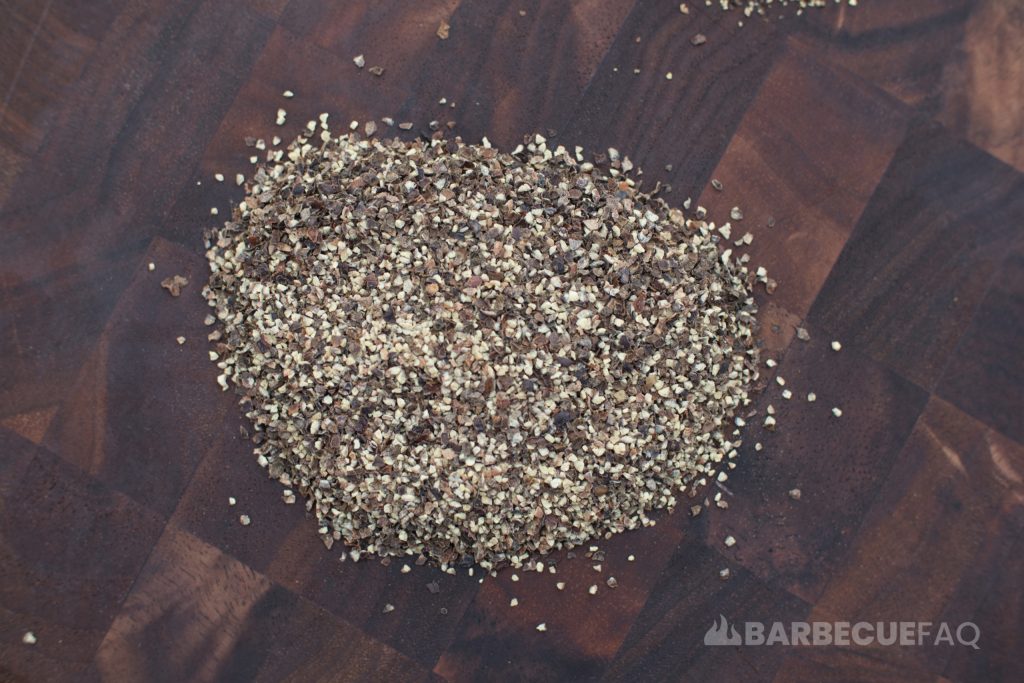
For people unaware, mesh size has a lot to do with:
- Pungency of the pepper due to the evaporation of alkaloids and terpenes.
- Bark formation on smoked meat.
Steve doesn’t really clarify why he’s using 20-34 mesh but it’s likely a balancing act between those two factors.
Like most people who do BBQ, all I have at home is 16 mesh black pepper, table ground black pepper, and freshly cracked peppercorns.
Most people in the BBQ community use 16 mesh because it’s pungent, but tapers off when smoked for a long period of time. The result is a great bark on smoked meat.
The Paprika
For this ingredient use 1 teaspoon.
Most people don’t realize this but most commercially sold “BBQ rubs” are primarily a low-grade paprika that does almost nothing for flavor – it’s there for color.
Here’s a rib rub that has paprika in it, sweating on the meat:
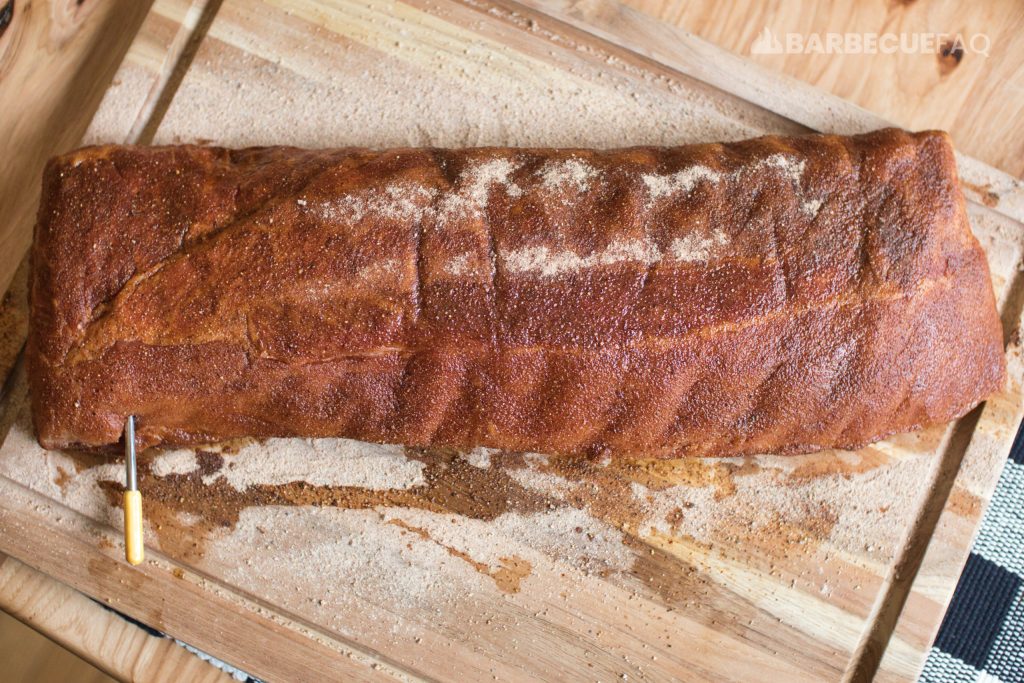
Steve also notes that the modest amount in his rub is solely used for color too.
Although, if you don’t have paprika, you can omit it.
Here’s a brisket smoked with just cherry wood – still that mahogany color only there’s no paprika being used:
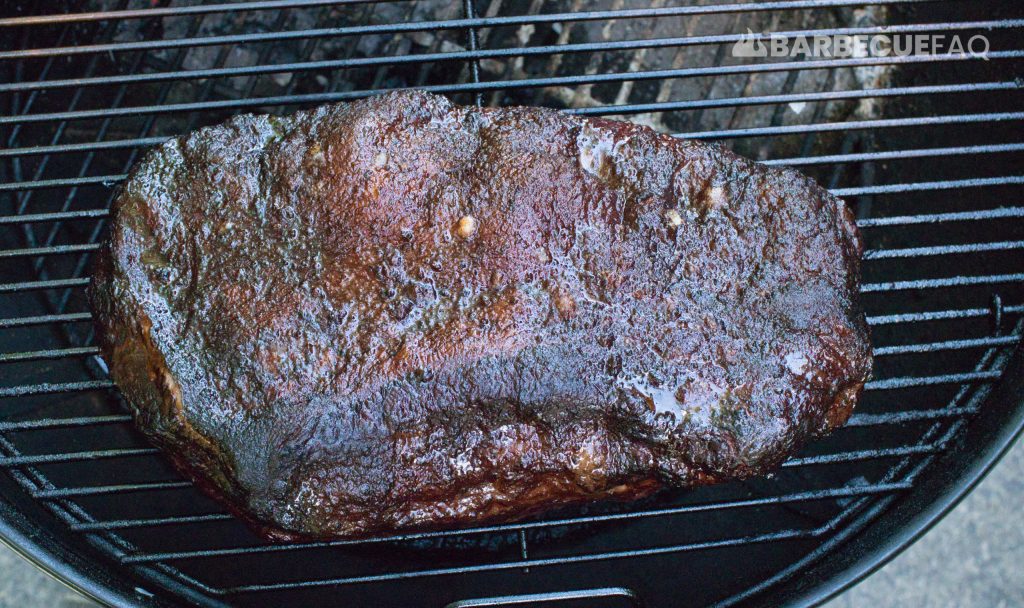
The Sumac
For this ingredient use 2.5 tablespoons.
Most of the flavor punch in Steve’s rub is from the Sumac.
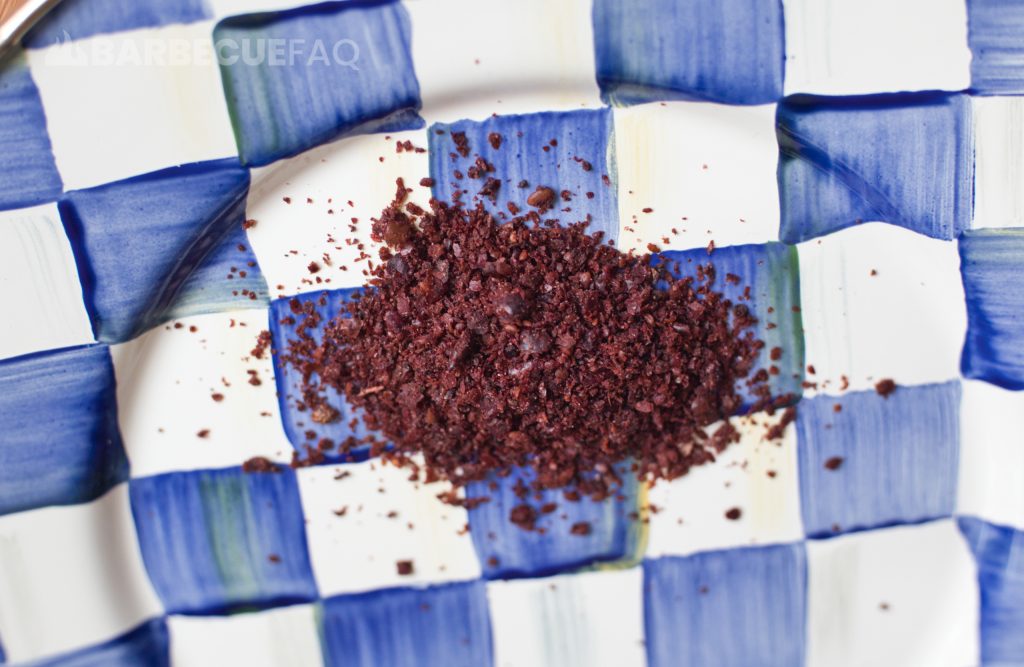
If you’ve never tasted sumac – I equate it to the taste of salt and vinegar chips.
This ingredient is an absolute must when re-creating Steve’s rub at home. Without it, you don’t have the acidic/tart note that’s characteristic to his rub.
I source my cured sumac from Burlap and Barrel.*
*Don’t buy the big jar, the little one is more than enough for a large portion of this rub.
The Salts
For this use 1/4 cup Diamond Crystal Kosher salt, 1/2 tablespoon of table salt, and 1/4 tsp celery salt.
Steve uses multiple granule sizes for different purposes; Those being table salt, coarse salt, and flour salt.

He doesn’t specify the “coarse” salt that’s being used but it’s safe to assume it’s likely something similar to Diamond Crystal due to the quantity and the mix-ability aspect of that salt in comparison to Morton’s.
Diamond crystal has less of a tendency to dissociate from other ingredients, unlike Morton’s.
The table salt is used to add more savoriness and saltiness.
Steve also lists “ground celery seed” in the rub formulation – while I do have this at home, most probably won’t.
BUT since I also omitted the flour salt, using celery salt is just another way to add a salty ingredient.
Sugar
For this ingredient, use 1 teaspoon of white sugar.
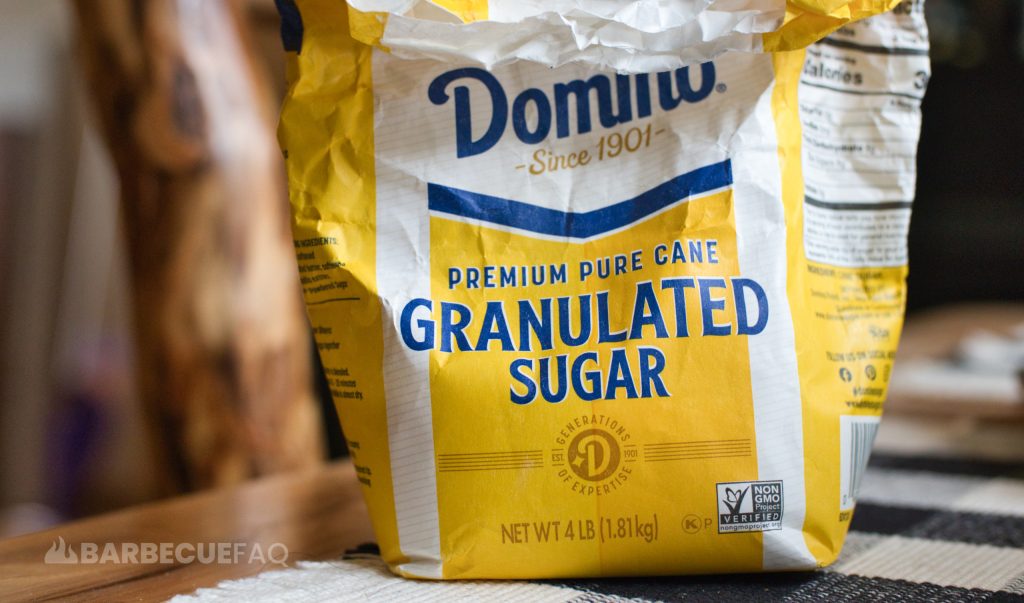
Sugar isn’t something you’d think to add in this rub but it does help to cut through the acidity and fattiness of both the rub and the meat.
White sugar works best when trying to add:
- Sweetness
- Bark
Granulated Garlic and Granulated Onion
For these ingredients use 1 tablespoon of granulated garlic and 1/2 tablespoon + 1 teaspoon of granulated onion.

Steve list’s the granulated versions as apposed to the powders because, in my opinion, they mix better.
Both of these ingredients help to round out the others and add pleasurable taste sensations.
Ingredients I Believe You Can Safely Omit
Other ingredients Steve lists are:
- MSG
- Beef Base powder
- Powdered/flour salt
- Soybean oil
- Disodium inosinate and guanylate
- Grilled meat flavoring
- Citric acid
The MSG, disodium inosinate, and guanylate are all umami taste sensations that are sort of hard to describe. More or less it lights up the tongue in an appetizing way.
While I do use MSG, lots don’t or refuse to.
In comparison to both a finger test and a direct comparison on a brisket, I notice a slight difference between his and my rub – however, I still find the primary taste contributor to be the Sumac, the pepper, and the salt(s).
Beef base powder – this more or less has a beef stock/bullion taste that’s sort of missed in the above rub – especially in the finger test but it’s not super evident when smoking brisket itself. It’s there to re-enforce the “beefiness” of the meat.
Soybean oil – This is common in terms of binding ingredients together that have a tendency to dissociate from one another. At home, this ingredient isn’t needed – simply shake the bottle or rub more often when applying.
Citric acid – In my opinion, not needed. I do use lots of citric acid in jerky marinades but I don’t taste much of a difference here.
Grilled meat flavoring – something I’ll never see in my grocery store and would have to source online. To be frank, I don’t really taste this ingredient regardless.
Food for thought: “Grilled meat” flavor is often a taste sensation you can get from barrel cookers too.
Granted, depending on the barrel – these typically cook hot and fast as apposed to low in slow so that’s already a trade-off in terms of taste, fat render, and more.
Do These Taste the Same?
Overall, yes-ish.
Especially on smoked food as apposed to a finger test.
The only real flavors I think you miss are:
The beef base powder, which is really just there to re-enforce the beefiness of the meat anyway.
The MSG flavor that’s just an umami bomb on your tongue but I almost never have MSG at home.
Is it Really More Cost Effective to Buy Steve’s Rub
To preface: I bought his rub regardless because I think Steve makes great content.
Steve claims that while you can make his rub (again he quite literally gives you the ingredient percents), his rub is more cost effective.
His rub is $14.99 for a 9.75 oz bottle.
In comparison, when bought in bulk, my copy-cat recipe is technically cheaper.
| Ingredient | Cost |
|---|---|
| Burlap and Barrel Cured Sumac | $39.99/16 oz or $2.49/oz. |
| White sugar | Negligible as most people have at home. |
| Table Salt | Negligible as most people have at home. |
| Badia 16 Mesh Black Pepper | $16.99/16 oz or $1.06/oz |
| McCormick Paprika | $13.95/18.4 oz. or $0.76/oz |
| Diamond Crystal Kosher Salt | $4.98/16 oz. or $0.31/oz |
| Badia Granulated Garlic | $7.49/16 oz. or $0.47/oz |
| Badia Granulated Onion | $6.49/20 oz. or $0.32/oz |
| McCormick Celery Salt | $7.39/4 oz. or $1.85/oz. |
We can take these percentages and multiply them by our oz values for 9.75 oz.
| Ingredient | Percent Cost |
|---|---|
| Burlap and Barrel Cured Sumac | $2.42 |
| White sugar | Negligible |
| Table Salt | Negligible |
| Badia 16 Mesh Black Pepper | $4.865 |
| McCormick Paprika | $0.074 |
| Diamond Crystal Kosher Salt | $0.695 |
| Badia Granulated Garlic | $0.18 |
| Badia Granulated Onion | $0.09 |
| McCormick Celery Salt | $0.18 |
So with certain ingredients omitted we’re sitting at ~$8.51 for 9.75 oz.
Granted, you have to spend far more upfront because you’re buying these ingredients in bulk and you’re also omitting several.
I’d wager to say Steve is correct, his rub is cheaper upfront in comparison to buying these ingredients in bulk.
However, if you really like his rub and you’re looking to make it in bulk (minus a few ingredients like me), you can save $6.48 for every 9.75 oz. you make.
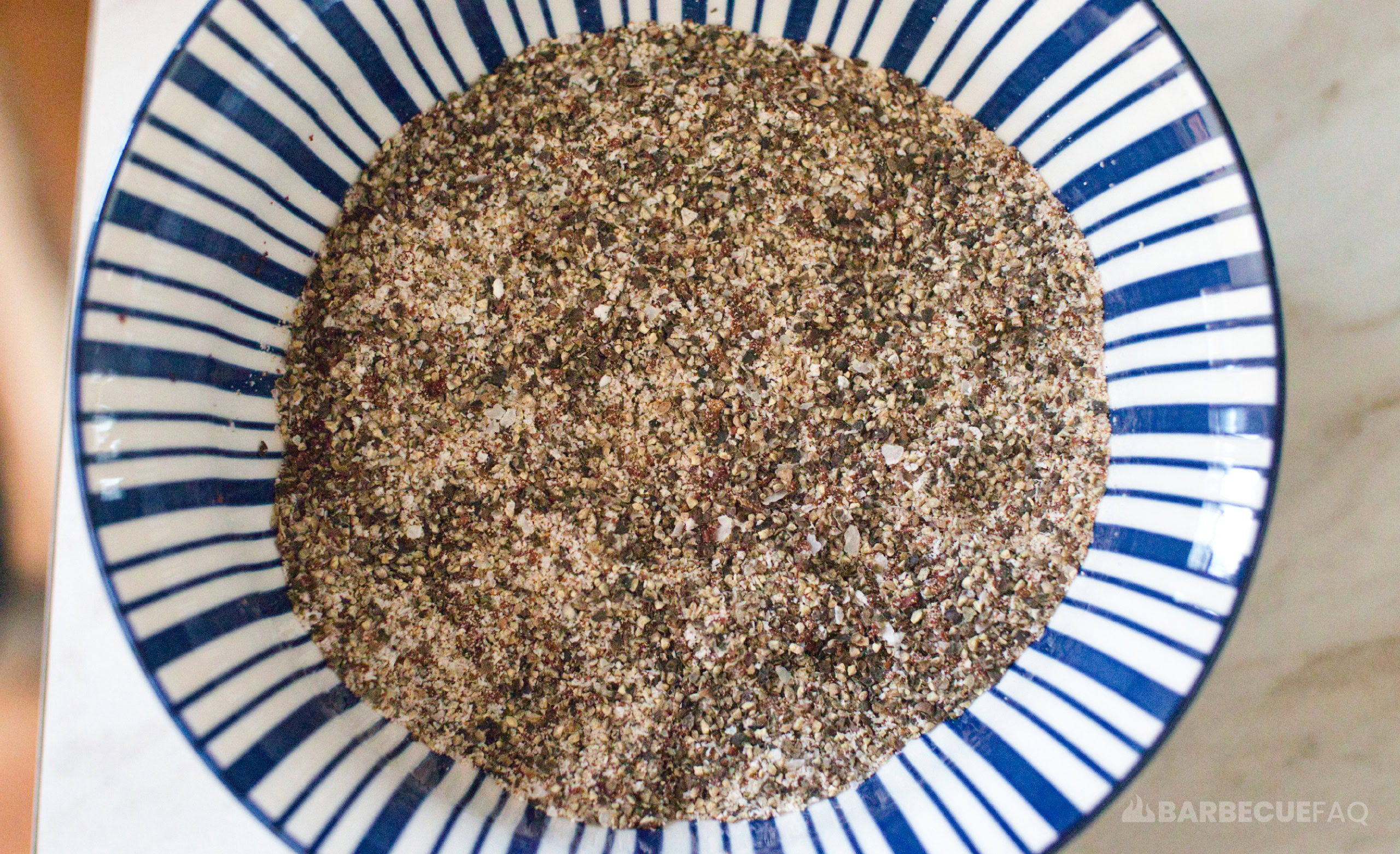
Smoke Trails BBQ Brisket Rub Copycat
Ingredients
- 1/2 Cup 16 Mesh Black Pepper
- 2 Tbsp 16 Mesh Black Pepper
- 1 Tsp Paprika
- 2.5 Tbsp Cured Sumac
- 1/4 Cup Diamond Crystal Kosher Salt
- 1/2 Tbsp Table Salt
- 1/4 Tsp Celery Salt
- 1 Tsp White Sugar
- 1 Tbsp Granulated Garlic
- 1/2 Tbsp Granulated Onion
- 1 Tsp Granulated Onion
Instructions
- Combine the ingredients in the specified quantities and then mix well.
Notes
Recipe note 5/24/2024:
I think a more suitable way to add the “beefy” and “MSG” umami bomb is via Yeast Extract.
This ingredient is somewhat affordable and both tastes beefy and contains glutamates (which is MSG).
A suitable amount would be 1 tsp in this rub formula.



